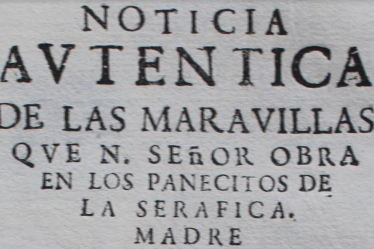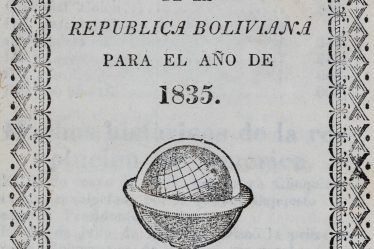Remarkable journal kept by a British sailor on route through the Pacific Ocean, entitled Diario de Don Phelype Thopson Piloto Mayor de esta Fragata Nuestra Señora de la Consolacion (alias) el Buenfin, que con el divino favor, y el de su Santissima Madre de la Consolacion, a quien llevo por Patrona, espero hazer desde Manila hasta el Reyno de la Nueva España, por una Derrota desconocida, written in 1773 on board the vessel.
A remarkable survival, and a true testament to 18th century sailing across the Pacific, this logbook shows the route from Manila to New Spain following a trans-Pacific route which until then had remained untested and unknown, by a Spanish commander of British descent.
This journey through hitherto uncharted territory led Thompson to be credited with providing the first firm reports of Helen Reef, Ngatik and Oroluk in the Caroline Islands, which he named Bajo Triste, Pasión and San Agustín islands (see A. Sharp, The Discovery of the Pacific Islands, 1960, p. 128). Only two other complete copies of this manuscript are known to exist, one at the Archivo General de Indias in Seville (AGI Indiferente General 2728) and another in the Archives of the Museo Naval, Madrid (Ms. 624). By using this new route, Thompson virtually put stop to an era of the monopoly exerted by the so-called Manila Galleon traditional route
Thompson’s route differed substantially from either the traditional path taken by the Manila Galleon which left the Philippines via the Strait of San Bernardino or its alternative along the western coast of Luzon Island which the Spanish government had made mandatory in 1771. Instead, Thompson navigated the Buen Fin south from Cavite, past Lubang Island, through the Mindoro Strait and south along the western coast of the Philippines to Zamboanga and past Pulau Sangihe Island, North Maluku and the New Guinea coast before sailing out into the Pacific. Once in American waters, the Buen Fin reached the Baja California coast at the Isla de Cedros and Isla Natividad and sailed south to San Blas. This last port had only been established in 1767 and was designated as the naval base from which all exploration voyages to the north-west coast of America were organised and equipped as well as the main supply base for Spain’s newly-established Californian settlements. Thompson’s Diario ends at San Blas but in November the Buen Fin continued its journey to Acapulco arriving on 3 December 1773 before sailing back to Cavite early in 1774.
The author of this manuscript, Felipe Thompson, was a Piloto-Mayor in the Spanish Navy with a long career in the Philippines trade. The position of Piloto-Mayor was one of great prestige and influence on the galleons and, at Manila, the object of much respect. As the chief navigating officer, the pilot was generally the only high-ranking officer with any nautical skill and the actual direction of the voyage was usually entrusted to him. It is evident from Thompson’s Diario that this was the case on this voyage where Thompson rather than the captain, Antonio del Villar Saravia, is clearly in charge of navigating the Buen Fin.
The voyage, undertaken ‘out of season and by an uncommon route’ (‘fuera de tiempo y por rumbo extraordinario’), was financed privately by one of Manila’s wealthiest merchants, Don Juan Francisco Solano. The reason for this was that the Manila Galleon, the frigate San Carlos, had arrived back from Acapulco without the situado, the yearly subsidy sent to the Spanish colonial administration in the Philippines from the Spanish treasury in New Spain. Solano, therefore, offered to collect the situado in exchange for certain trading concessions and this explains the Buen Fin’s sailing out of season. Usually the Manila galleon and ships sailing across the Pacific set off from Manila in June but the Buen Fin sailed from Cavite on 5 January 1773 and arrived at San Blas on 24 June. As a result and as is apparent from the tempestuous weather described in Thompson’s account, the Buen Fin braved the harsher of the two annual monsoons, that running from late September or early October to April.
The value of a new route across the Pacific undertaken at an unusual time of the year was much appreciated both in the Philippines and in Spain. Some years later when Solano sought a military promotion, it was this voyage, which largely tipped the scales in his favor. The prestigious Spanish naval officer, Don Juan de Lángara y Huarte, who had been involved in a series of voyages direct from Spain to Manila from 1765 to 1784, backed Solano noting that Thompson’s journal was ‘extremely useful’ (‘utilissímo’) and that the new route discovered would be invaluable in time of war as lines of communication between the Philippines and New Spain could be kept open while Spanish ships could rely on a route unknown to the enemy (AGS Estado 6900).
In keeping with the nature of Spanish management of the Pacific during the eighteenth century, this voyage was neither published nor particularly advertised but, circulated in manuscript, it did enter Spanish know-how of the Pacific and contribued towards further exploration voyages. Thompson’s deputy pilot, José Antonio Vázquez, was Piloto-Mayor on Francisco Mourelle de la Rúa’s voyage from Cavite to New Spain in the frigate Princesa in 1781 and must also have had a copy of Thompson’s Diario. He sailed the Princesa out of the Philippines via the usual San Bernardino Strait but then followed the Buen Fin’s example in sailing south along the New Guinea coast into the Pacific thus making significant discoveries in the mid-Pacific, most notably Vava’u (Rodríguez Sala, ‘Diario de la Navegación hecha por José Antonio Vázquez’. Contribución al conocimiento náutico de la ruta entre Filipinas y la Nueva España, 2013). Alejandro Malaspina was also familiar with Thompson’s voyage and most likely had a copy of the Diario on his celebrated exploration expedition to the Pacific from 1788 to 1794 as he mentions him in his journal (A. David, F. Fernández-Armesto, C. Novi, G. Williams, eds., The Malaspina Expedition 1789–1794: The journal of the voyage by Alejandro Malaspina, vol. III, Manila to Cadiz, 2004, p. 34).
Thompson’s findings and route were also incorporated into the charting of the Pacific by the Depósito Hidrográfico, a body founded in 1797 to replace the defunct Casa de Contratación in cataloguing all Spain’s accumulated hydrographical knowledge. Thompson is mentioned by the Depósito’s first director, José Espinosa y Tello, in his Memorias sobre las observaciones astronomicas, hechas por los navegantes españoles en distintos lugares del globo, 1809, vol. II, pp. 16–17.
The route from Manila across the Pacific to the American coast had been problematical since Magellan had claimed the Philippines for Spain in 1521. A route, in fact, had not been discovered until Andrés de Urdaneta’s expedition in 1565. Since then finding faster and more convenient routes had been a constant preoccupation for what was one of the longest and most hazardous sailing routes known. In the eighteenth century, non-Spanish European powers as well as local pirates, especially those based at Mindanao, were becoming increasingly active in the Pacific. The Manila Galleon was considered a great prize, a fact corroborated by its capture in 1709 by Woodes Rogers, in 1743 by George Anson and in 1762 by HMS Panther and HMS Argo during the British seizure of Manila. In addition, the Manila Galleon, as a result of the increased cost in sending ships to Acapulco as well as protecting Spanish settlements in the Philippines, was becoming less lucrative to the Spanish crown. During the second half of the eighteenth century, therefore, discovering methods to safeguard the Galleon while making it faster and more profitable were becoming increasingly important and to a large extent this explains voyages such as Thompson’s. In the end, it was the traditional route which continued to be used until the Manila Galleon ceased to exist in 1815 and the path followed by Thompson was largely abandoned after Mourelle de la Rúa’s expedition but by then the security and economic pressures on the Manila Galleon had spurred on a new phase of Pacific exploration from the Philippines as Thompson’s bold initiative illustrates.
Literature: Maria Luisa Rodriguez-Sala, Diario de la navegacion hecha por Jose Antonio Vazquez, Mexico, 2013; Thomas Peterson, Secrets of the Manila galleons, Corvallis, 2005-07, Chapter 6 (Chapter 6: Felipe Thompson – English, who discovered several islands in the South Pacific while trying an MG route in 1773).



